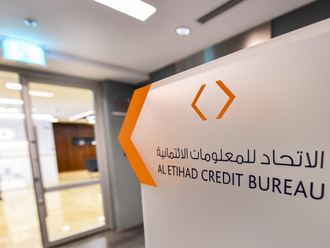Dubai: Having enjoyed a long period of popularity with sovereigns and corporates looking to raise debt, we now expect the global sukuk market to undergo a correction in 2015.
The total amount of sukuk issued in the first six months of this year reached $38.6 billion (Dh141.7 billion), compared with $67.2 billion in the same period of 2014. We forecast total issuance to top $50 billion-$60 billion in 2015, representing a 40 per cent to 50 per cent decline on levels seen last year.
Taken at face value, this looks like a significant decline in activity. But the forecast drop in issuance is largely based on a decision by the Central Bank of Malaysia (Bank Negara Malaysia or BNM) to stop issuing sukuk and switch to other liquidity management instruments.
There’s no doubt that the BNM leaves a gaping hole in the sukuk market. In 2014, BNM alone issued about $45 billion of sukuk out of total issuance of $116.4 billion.
We understand that part of the reason behind the BNM move was that its sukuk were subscribed to by a broad array of investors, preventing them from reaching their intended end-users (primarily Malaysian Islamic banks for liquidity management purposes). As a result, BNM decided to switch to other instruments restricted to banks.
While the exit of a major issuer of sukuk might be cause for concern amongst some industry observers, it’s worth pointing out that the underlying fundamentals of the global sukuk market remain solid.
Excluding the BNM impact, the worldwide volume of sukuk issuance dropped by 10.7 per cent in the first half of this year, broadly in-line with expectations. This also confirms that the impact of falling oil prices on recurring government spending and investment in core markets (GCC countries and Malaysia) was limited.
While we expect this trend to continue in the second half of 2015, the effect of lower oil prices on sukuk issuance next year remains uncertain.
What is more, the BNM move also offers an opportunity for the likes of the International Islamic Liquidity Management Corp (IILM) and the Islamic Development Bank (IDB) to step up their issuance and provide the industry with liquidity, thereby contributing to the development of an Islamic yield curve.
Looking ahead, we believe sovereign issuers, and to a lesser extent banks, will dominate the sukuk market in the second half of the year. Countries that are most vulnerable to a fall in oil prices, namely Oman and Bahrain, are likely to issue sovereign sukuk. That said, other countries could also follow suit as the reality of lower revenues starts to pinch budgets.
Another factor that supports the medium-term outlook for global sukuk issuance is the implementation of Basel III, a set of reform measures aimed at strengthening the regulation, supervision and risk in the banking sector. Future growth in sukuk issuance should benefit from implementing regulatory requirements such as those of Basel III and addressing the chronic lack of high-quality liquid assets in the Islamic finance industry.
Highly-rated multilateral development banks, sovereigns and corporates could also view Basel III as an opportunity to return to the market to step up their issuance.
While the global sukuk market appears to have hit a soft patch in 2015, the list of potential issuers continues to grow. How quickly the industry can recapture its previous momentum remains to be seen.
— The writer is global head of Islamic Finance at Standard & Poor’s Ratings Services












